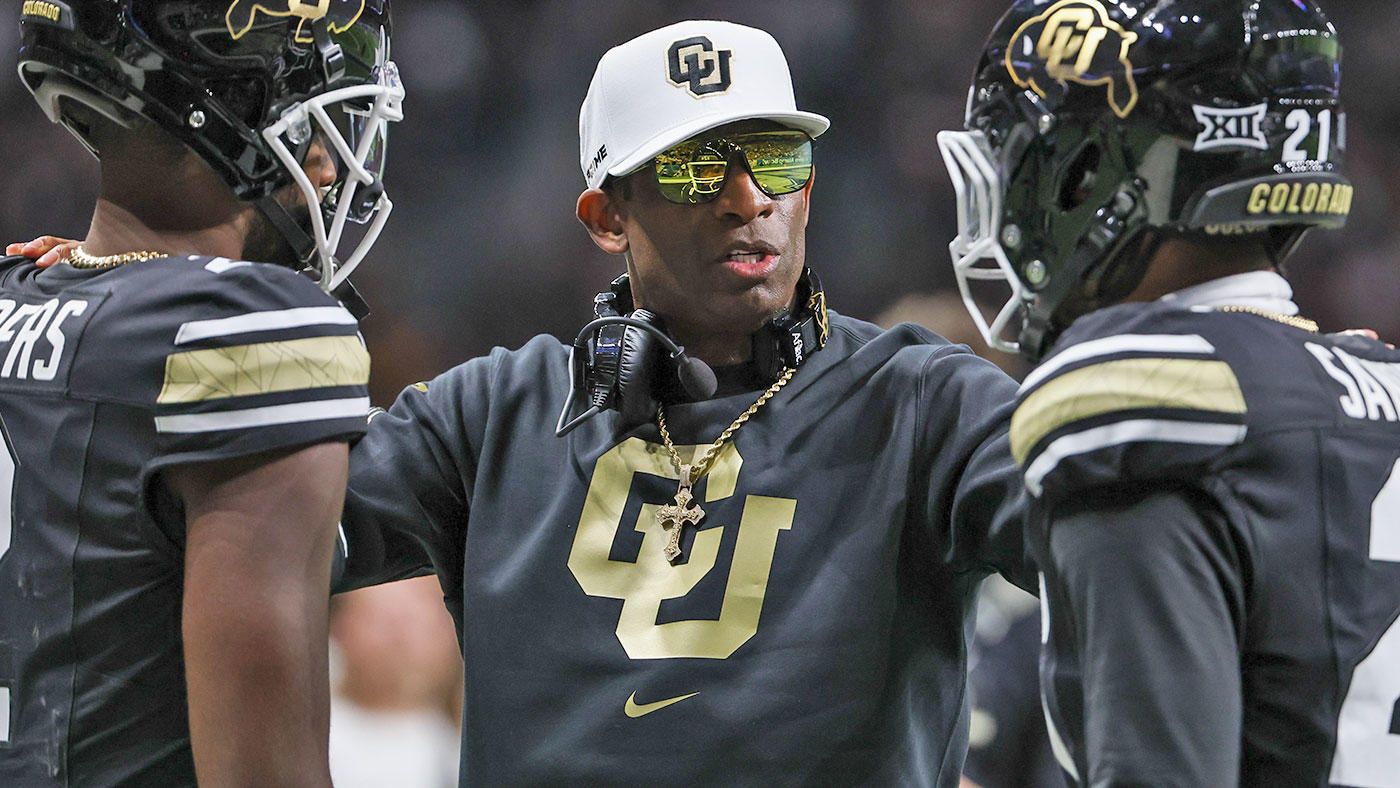During the NCAA tournament’s opening weekend, five power conference teams punched their proverbial tickets to the Sweet 16 with wins over so-called “mid-majors.”
Top-seeded Florida survived a scare from two-time defending national champion UConn; Auburn outlasted Creighton; Arkansas upset St. John’s; Alabama cruised past Saint Mary’s; and Houston beat Gonzaga.
By most accounts, four of those five power league programs spent more on their rosters than their mid-major opponents, in some cases by as much as $2 million (the outlier is UConn).
But perhaps, soon enough, the mid-majors will be the ones with the bigger basketball budgets.
No, really.
“In the Big East,” says Duke athletic director Nina King, “their basketball revenue-share portion will be a lot more than what those of us can do who have Division I power football programs.”
As the college athletics industry sits on the brink of historic change — schools can share revenue directly with athletes starting this summer — an unexpected spending disparity looms as a byproduct of the new revenue-sharing rules. Mid-major programs — operating without having to invest in a power conference football team — are expected to, in some cases, outspend their football-focused big brothers in men’s basketball.
The spending issue looms as a serious enough threat that it has emerged as a critical discussion point and agenda item within power league administrative meetings in the SEC, Big Ten, ACC and Big 12 — something SEC commissioner Greg Sankey and other high-ranking officials acknowledged this month in interviews with Yahoo Sports.
As the NCAA tournament’s second weekend arrives, the potential spending disparity is at the forefront of many minds.
“People have raised the issue with me and they are raising it more frequently right now,” Sankey said last week. “It’s something we are having conversations about at every meeting. I’m confident in our schools’ ability to compete, but it does raise a set of questions.”
Under college sports’ new revenue-sharing rules, schools will be permitted to distribute a pool of revenue to athletes up to an annual, escalating cap ($20.5 million in Year 1). Power league programs are gearing up to spend the majority of that revenue pool allotment — as much as $13 million to $16 million — on their revenue-generating giant of football, a move to remain competitive in the industry’s self-proclaimed “cash cow.”
For most power programs, that leaves roughly $2 million to $4 million to be directly shared with men’s basketball.
But for those fellow Division I schools without a football program, or one that competes in FCS or even at the Group of Six level, flexibility exists to heavily invest in a singular sport with the goal of qualifying and winning one of America’s most popular events: the NCAA men’s basketball tournament.
“Big East schools next year can pay $6 million or more to their basketball team,” said Houston athletic director Eddie Nunez, “and that’s a game-changer.”
As many as a dozen non-power league Division I schools — many of them in the Big East — are planning to spend at least $5 million on their men’s basketball roster next year, with a smaller group hoping to reach the $6 million and $7 million marks, those with knowledge of the plans told Yahoo Sports.
To keep up, power conference schools may need to circumvent the new rev-share pool cap by orchestrating third-party and booster-backed name, image and likeness deals for athletes — essentially violating what the NCAA’s own attorney describes as the “central part” of the landmark House settlement agreement: prohibiting booster pay.
“I know our coaches are worried. They’ve openly talked about it,” Kansas State athletic director Gene Taylor said. “That’s where the rumors start to fly about circumventing the cap. Are we going to go back under the table again?”
Why does football matter more?
Last week, before his team’s first game of the NCAA tournament, Maryland coach Kevin Willard used a news conference to voice his frustration over the school’s investment in its roster.
While being courted for the head job at Villanova, Willard bemoaned Maryland’s NIL roster spending over the previous two years and seemed to also object to the school’s revenue-sharing plans next year. The school announced earlier this spring that it plans to share $14 million with football and $4 million with its men’s basketball roster in 2025-26 — believed to be the second-highest basketball pool in the Big Ten and likely top 10 nationally among power conference programs.
However, at Villanova — a school without a Big Ten football program — Willard stands to get as much or more than $6 million in roster revenue-share.
“Power schools are going to do what they need to do to remain competitive in football,” said Todd Schumaker, a sports law attorney at Church Church Hittle + Antrim and a former NCAA investigator. “March Madness is great but all of the dollars are with the football playoff. After football, you then figure out what’s left for basketball.”
Most power conference athletic directors plan to distribute the funds based on the revenue that a sport generates — a way to reward the athletes producing the cash while also providing a legal argument (perhaps a failed one) against any future Title IX lawsuits.
The most common formula is 70%-85% to football, 10%-20% to men’s basketball and the final 10%-15% to other sports. The distribution formula is generating strife among a school’s own coaches, each arguing for more of the revenue-share pie, especially at those blue-blood basketball programs such as Duke, Kansas and North Carolina.
Even at those traditional rich hoops schools, football still drives much of the revenue from conference television contracts, said KU athletic director Travis Goff. His coaches believe the approach is rational and understand “where we’re at and where we’re trying to go,” he said.
“At a place where football matters, we can’t justify $7-9 million to be shared with basketball,” Goff said, “but we do think we have some innate advantages at Kansas. Coaching, culture, institutional brand, fan base, facilities, they will all move the needle.”
At Duke, King is juggling three programs she says are generating “positive momentum.” The football program has won at least eight games three consecutive seasons and the men’s and women’s basketball teams both advanced to the Sweet 16 as No. 1 and 2 seeds, respectively.
All three head coaches have made “compromises” on their revenue-share requests, King says without revealing the exact distribution formula.
“It’s been a delicate balancing act,” she said.
It’s made more difficult by the current college sports landscape, where football success is the most significant driver of the industry’s future related to conference realignment, new television contracts, sponsorships, ticket sales and any other serious revenue-generating concept.
Take for instance the basketball powers shifting investment to the pigskin. Indiana is paying its head football coach $8 million a year; Kansas is spending nearly $500 million in football stadium renovations; and North Carolina made the audacious hire of Bill Belichick, with its athletic director, Bubba Cunningham, specifically noting a “demonstration” and “commitment” to the sport.
Many administrators live in fear of their school being left behind during the industry’s next great splintering — a presumptive realignment shift to a smaller, more consolidated group of programs likely coming after 2030.
Football, most of them believe, will be the primary driver of such a split.
“Our whole governance model is based on one sport,” said one Big 12 athletic director. “If you want to be a basketball-only school, you’re going to end up in the West Coast Conference.”
Keeping pace with the Big East
Within Big East meeting rooms, a very different conversation is happening: Focus on basketball.
Though Big East budgets are a fraction of those in the power leagues — their schools earn $4 million to $5 million annually in conference distribution compared to $40 million-plus in the P4 — Big East members are financially strong enough, with donations, university subsidies and basketball revenues, to share a portion of the $20.5 million.
“Everybody will be in the game — that’s my prediction,” said Val Ackerman, commissioner of the Big East.
Ackerman declined to get specific on financial figures, but those with knowledge of the spending expect many within the conference — UConn, St. John’s, Villanova, Creighton, perhaps even Marquette, Georgetown and others — to support men’s basketball with at least $5 million of revenue-share funding.
There are other programs in Division I outside of the Big East to worry about, too. What about Gonzaga and VCU? There’s also Memphis, one of several Group of Six programs whose rev-share budget could reach Big East standards.
“It’s kind of interesting from my seat,” said Jeff Jackson, the commissioner of the Missouri Valley Conference. “I don’t have a whole lot of empathy for the A4’s financial concerns. Welcome to our world.”
Though he declined to comment on his distribution plan, UConn athletic director Dave Benedict believes that “at minimum” schools need $5 million for a men’s roster, $1 million to $2 million for a women’s roster and in the “neighborhood of $5 million” for a Group of Six football roster. Such figures, he believes, will put those teams near the top of their respective sports in the revenue-share era.
“We are going to do everything we can within the structure to continue to compete for championships,” he said. “If that’s something that scares other people, I’m not sure what to say.”
Ackerman, too, has heard about the “nervousness” within power leagues.
Her response? “We are flattered by the respect they seem to hold for the Big East and we will live up to that,” she deadpanned. “We have the ingredients to keep this going. We don’t have their revenue base. Football money goes a long way with other sports. But basketball is less expensive. We are going to have what we need to stay in the top tier of college basketball.”
That figure — to remain atop college basketball — has been escalating now for three years, school administrators and general managers tell Yahoo Sports.
To be a top-25 spending program last season, perhaps $2.5 million to $3 million was needed for a basketball roster. To be a top-25 program this season, as much as $5 million was necessary. In fact, according to estimates within the SEC — which qualified an NCAA-record 14 teams into the NCAA men’s tournament — roughly half of the conference spent at least $5 million on their roster.
This poses a legitimate problem in the new revenue-share era. Without circumventing the pool cap, that figure will drop significantly next year.
“No one wants to go backwards,” said one SEC school administrator. “We’re having to frontload now and get creative with new sources of revenue.”
To avoid a decrease in player payments and to compete with the Big East revenue-share numbers for next year, many SEC schools, as well as others across the country, are “frontloading” contracts — designing booster-backed NIL deals in a way that distributes to athletes a majority of the compensation before they become subject to the new enforcement entity.
Deals with payments after June 30 are subject to a new Deloitte-run NIL clearinghouse that is expected to heavily scrutinize and potentially prohibit the booster deals that for years now have been disguised as NIL contracts. The legality of the clearinghouse remains a question — it could trigger legal challenges — but, either way, many school-affiliated collectives are funneling millions of dollars to players before the July 1 implementation date.
Frontloading is just a one-year fix, however.
How will power league basketball programs compete with the Big East spending in Year 2 and beyond?
“It’s a problem,” said an SEC athletic director. “Villanova and St. John’s can pour $10 million into basketball if they want. The SEC isn’t going to be able to do that because we cannot sacrifice the cash cow of football.”
In a twist of irony, the very thing power conference leaders designed — this new, cap-based enforcement arm to police booster deals — stands in the way.
Those in the Big East are rooting for the clearinghouse to work, though they aren’t necessarily optimistic. They expect power leagues to test the clearinghouse’s fair market value system and the compensation range that Deloitte has created to determine if third-party deals are kosher.
“If it has teeth, the Big East is going to be positioned extremely well,” said one of the conference’s athletic directors. “That’s what we are praying for.”
While plenty of questions remain as it relates to college athletics' new enforcement entity, some answers have been unearthed over the last few weeks.
Deloitte is using thousands of previously struck NIL deals of college and NFL players in developing a “compensation range” to determine if deals are authentic. In a plan under discussion, athletes can resubmit rejected deals at least once with alterations suggested by the clearinghouse.
For example, if Deloitte deems a submitted $100,000 deal between an athlete and third party to actually be valued at $50,000, the player can alter the deal to align with the clearinghouse’s suggested figure. Deals rejected for a second time are referred to the CEO and enforcement staff and are then processed through an appeals system via court-overseen arbitration.
From a recruiting standpoint, this is all very tricky.
Many power conference programs are recruiting with the expectation that they will supplement their revenue-sharing amounts with third-party NIL deals, promising a player a certain amount in rev-share plus an amount from outside NIL. However, those outside deals aren’t guaranteed dollars.
Those in the Big East, meanwhile, are able to offer guaranteed school payments.
“Those deals are not received the same way,” said one college basketball general manager.
Jim Boeheim, the former Syracuse basketball coach-turned-television analyst, does not believe the power conferences will struggle to contend in basketball roster spending, because he doesn’t trust that the clearinghouse will survive legal challenges.
“That’s why the NIL collectives are still in play,” he said. “Players are making $500,000-$1 million now for basically doing nothing (no NIL activities). They’re going to take that ait'sway? A player whose deal is rejected is going to go to court and win.”
What does the future hold?
The potential spending disparity in basketball plays out against the backdrop of ongoing negotiations over the future of NCAA governance and control of the NCAA’s championships.
Earlier this spring, the SEC authored a proposed NCAA governance model that would grant the four power leagues more control of rule-making and legislative decisions. In a more significant move, the model would also give the SEC, Big Ten, ACC and Big 12 more influence and management of postseason championships, most notably overseeing access and revenue distribution of the men’s basketball tournament.
Are these two elements — NCAA governance/championship control and revenue-share disparities with mid-majors — related? Some believe that the NCAA tournament’s future — a change to the revenue-distribution structure, automatic qualifying spots or expansion — directly correlates with the potential disparity in basketball revenue-share spending.
Sankey, however, told Yahoo Sports that the spending disparity is not a “driver at this point,” but “we have to pay attention to how this revenue sharing plays out and where its impacts reside. That includes how we make decisions.”
An 18-person committee, of which Sankey is a member, has twice met over the future of NCAA governance and championships. The committee is tasked with completing its work by July 1.
Many believe that the power conferences will use their influence to alter governance and championships as a way to combat any basketball spending disparity.
“What does our future state of being look like that might allow a non-FBS school to outspend [a power conference school] in basketball?” asked one Division I conference commissioner. “I don’t think that future is going to exist. They have the control and they’re going to stop that from happening.”
For instance, even before the settlement’s approval, there is discussion of changing the revenue-sharing rules as soon as Year 2 of the settlement, according to those familiar with the talks. As it stands now, a school’s revenue-share pool is reduced by the cost of the scholarships in which they add, up to $2.5 million.
At the highest level, officials are discussing a potential request to have the $2.5 million reduction eliminated from the terms, freeing up extra cash in a cap that already will escalate with each year.
“Imagine a world where Villanova or St. John’s has more money to spend on a sport than Texas or Ohio State? When in history could you imagine that happening?” asked one non-FBS general manager. “They are going to find ways to do it.”
Or, are they?
Some power conference programs plan to spend as little as $2.5 million on their men’s basketball roster because of a football-heavy distribution formula. They would need $4 million in third-party NIL for a 15-man basketball roster to reach the upper echelon of Big East spending.
“There’s not enough real NIL deals,” quipped one Big Ten athletic director, “for even North Carolina to do that.”
















